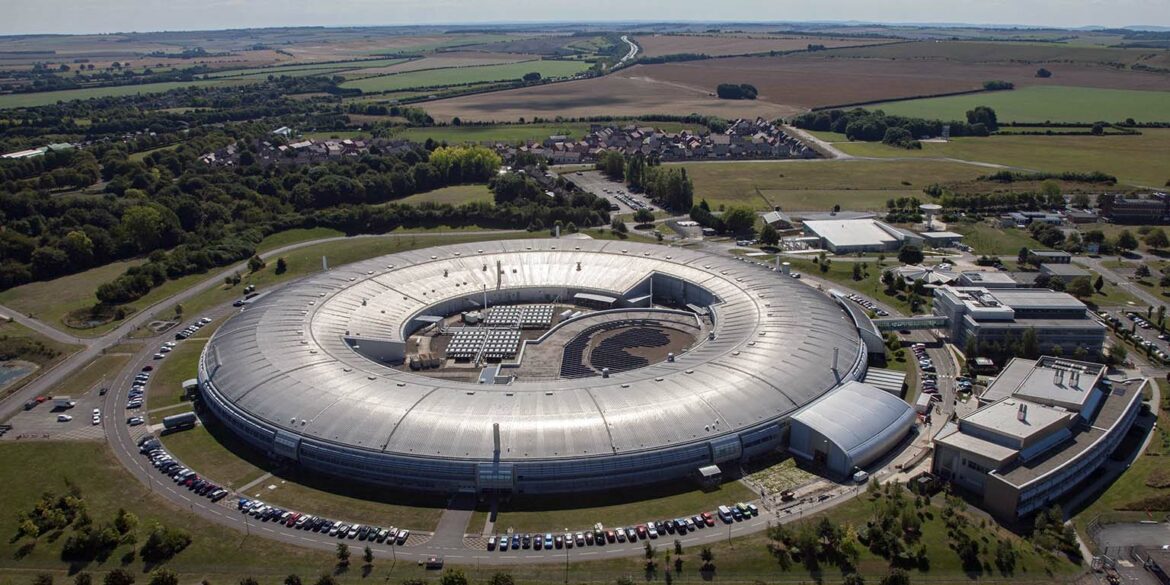A Diamond Light Source is a synchrotron light source located at the Harwell Science and Innovation Campus in Oxfordshire, England. It is operated by the UK Science and Technology Facilities Council (STFC). The facility produces very intense beams of X-rays, ultraviolet, and infrared light that are used in a wide range of scientific research.
The idea for a new generation of synchrotron light sources was first proposed in 1989 by John Hall and others at the Rutherford Appleton Laboratory (RAL). RAL had been operating a previous generation synchrotron, the Nimrod machine which had been built in 1978. The design for Nimrod had included an upgrade path to increase its brightness, but this was not possible with the existing magnets. A new machine would be needed.
In 1991, a feasibility study was funded by the UK government to investigate the possibility of building such a machine. This study concluded that such a facility was indeed feasible and could be built for around £250 million. The project received strong support from the UK government and construction began in 2000.
The machine itself is an electron accelerator that uses superconducting magnets to generate very intense beams of X-rays, ultraviolet, and infrared light. These beams are then used for various scientific experiments ranging from investigating materials at the atomic level to studying diseases such as cancer.
Diamond Light Source began operations in 2007 and has since become one of the world’s leading scientific research facilities. It has attracted over 2200 scientists from over 500 different organisations who use its unique capabilities for their research. In 2015, Diamond celebrated its 10th anniversary with over 1000 peer-reviewed papers published using data from experiments conducted at the facility.


